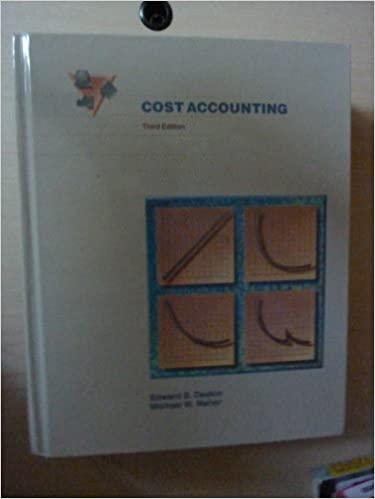Question
1. A pharmaceutical manufacture (firm 1) currently has a patent for the only drug to treat a certain illness. The patent lasts one period. In
1. A pharmaceutical manufacture (firm 1) currently has a patent for the only drug to treat a certain illness. The patent lasts one period. In period two, a second firm will be permitted to enter the market with a generic version of the drug. Producing the drug is tricky, but employees become more productive in the manufacturing process with experience. In particular, the marginal cost of production at a firm is 1 + Qi 1 , where is the firms cumulative past output of the drug. Note that the marginal cost is decreasing in . In period 1, demand for the drug is given by the downward sloping demand curve (). In period 2, consumers will view the original drug and the generic (if any) as imperfect substitutes. When both the original and generic drugs are offered, each firm s demand is given by (, ) = 10 + , where and are firm s own price and opponents price. If there is no entry by a generic producer, however, firm 1s demand curve is exactly as in period 1. Assume that there is no discounting between periods. (a) Suppose a generic manufacture (firm 2) does enter. Derive each firms best response function in the period-2 price setting game. Provide a graphic illustration. Show how firm 1s best response function is affected by changes in 1. (b) How is firm 2s equilibrium profit affected by 1 (i.e., is it increasing or decreasing in 1)? [A careful qualitative argument is enough if you choose to do so.] (c) Suppose firm 1 wants to accommodate entry. How does the optimal period-1 production for firm 1 compare to the counterfactual case where the patent is in force for both periods (so that no entry is possible in period 2)? In other words, is the optimal period-1 production for firm 1 larger or smaller than that in the counterfactual case? Please write down for nice
Please write down for nice
Step by Step Solution
There are 3 Steps involved in it
Step: 1

Get Instant Access to Expert-Tailored Solutions
See step-by-step solutions with expert insights and AI powered tools for academic success
Step: 2

Step: 3

Ace Your Homework with AI
Get the answers you need in no time with our AI-driven, step-by-step assistance
Get Started


